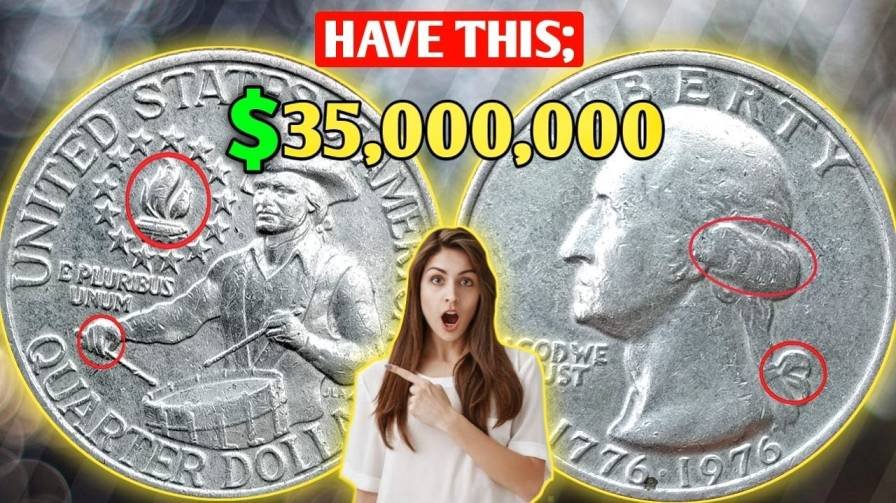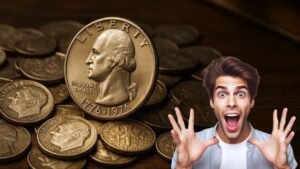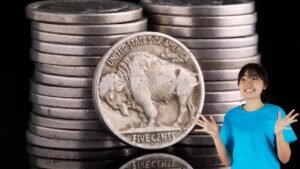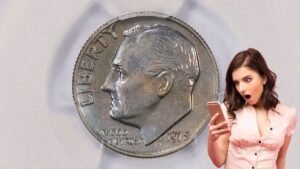Coin collecting can turn a simple pocket find into a life-changing discovery, and few examples capture that magic like the 1976 Bicentennial quarters. Minted to celebrate America’s 200th birthday, these coins blend history with hidden value—some rare versions have sold for up to $85 million at auction.
If you’re a beginner or a history buff sifting through old jars, knowing what to look for could pay off big. Let’s explore the story behind these iconic quarters and how to identify the gems.
The Story Behind the Bicentennial Quarter
Back in 1976, the U.S. Mint released these special quarters to honor the nation’s bicentennial—the 200th anniversary of independence. Designed after a nationwide contest in 1973, the reverse side features a drummer boy from the Revolutionary War, symbolizing the spirit of freedom. The obverse keeps George Washington’s portrait but adds the dual date “1776-1976” for that historical nod.
Over 1.6 billion were produced, making common ones everyday change. But rarity comes from minting quirks, condition, and limited editions, turning them into collector favorites.
Key Varieties and What Makes Them Special
The Bicentennial quarters came in copper-nickel clad (for circulation) and 40% silver (for collectors). They were struck at three mints: Philadelphia (no mint mark), Denver (“D”), and San Francisco (“S”). The “S” proofs, with their mirror-like finish, are prized for pristine examples.
Two standout rarities drive the hype:
- Double Die Obverse: A minting error causing doubled lettering and images on the front—super rare, with auction prices hitting $56 million.
- San Francisco Silver Proof: Limited silver versions in top condition, often fetching $85 million or more due to low supply and flawless strikes.
These aren’t just shiny; they’re pieces of American heritage that appeal to numismatists worldwide.
Factors That Boost Value
A quarter’s worth hinges on a few basics. Condition matters most—uncirculated coins in MS-70 grade (perfect) command premiums. Low mintage, like the 4 million silver proofs, adds scarcity. Errors, such as the double die, multiply value exponentially.
Historical tie-ins, like the bicentennial theme, fuel demand. Recent auctions show common clad quarters at $5-10, but rarities soar into millions. Always get professional grading from PCGS or NGC to verify authenticity.
Quick Guide to Identifying Rare Bicentennial Quarters
Spotting a winner starts with basics. Check the reverse for the drummer and dates, then flip to the mint mark below Washington (P for Philly, D for Denver, S for San Francisco). Weigh it—a silver one tips at 6.25 grams vs. 5.67 grams for clad.
Look for errors: doubled edges on letters or off-center strikes. Use a magnifying glass for details. If it feels heavy or shines unusually, it might be silver—test with a magnet (clad sticks slightly).
| Variety | Mint Mark | Key Identifier | Potential Value (Top Condition) |
|---|---|---|---|
| Copper-Nickel Clad | No Mark/D | Common circulation coin | $5-50 |
| 40% Silver Proof | S | Mirror finish, limited run | $100-500 (up to $10,000+ rare) |
| Double Die Obverse Error | Any | Doubled lettering/images | $50,000-$56 million |
| Off-Center Strike | Any | Misaligned design | $1,000-$10,000 |
Tips for Beginner Collectors
Diving into coins? Start small—grab a Red Book for values or apps like PCGS CoinFacts for quick checks. Join the American Numismatic Association for resources and events. Invest in basics: a loupe, scale, and storage slabs to protect your finds.
Attend local coin shows or browse eBay/PCGS auctions to learn. Focus on one series, like Bicentennial quarters, and get pros to grade high-potentials. Patience pays—many fortunes started with pocket change.
Other High-Value Coins to Watch
Beyond Bicentennials, eye these quarter legends:
- 1796 Draped Bust Quarter: Only 6,146 minted; top sales exceed $50 million.
- 1932-D Washington Quarter: Low mintage of 436,800; values up to $65 million.
- 1804 Draped Bust: Around 6,738 produced; premium examples hit $75 million.
These rarities show how history and scarcity create wealth—much like the Bicentennial duo.
The 1976 Bicentennial quarters aren’t just money; they’re time capsules of American grit. Dig through your collection, and who knows? A rare find could rewrite your story.
FAQ: Your Questions Answered
Q: What makes a 1976 Bicentennial quarter rare?
A: Rarity stems from mint errors like double die obverse, silver composition (40% for proofs), low mintage from San Francisco (“S”), and pristine condition.
Q: How much is a rare Bicentennial quarter worth?
A: Common ones are $5-10, but double die errors or silver proofs in top grade can fetch $50,000 to $85 million at auction.
Q: Which mint marks indicate valuable Bicentennial quarters?
A: No mark (Philadelphia) or “D” (Denver) for clad; “S” (San Francisco) for silver proofs—check below Washington’s portrait.
Q: How can I tell if my Bicentennial quarter is silver?
A: Weigh it (6.25g for silver vs. 5.67g clad) or test magnetism—silver won’t stick strongly; professional appraisal confirms.
Q: Where should beginners start collecting Bicentennial quarters?
A: Use the Red Book for values, join ANA, get a loupe for inspection, and grade via PCGS/NGC for authenticity.



